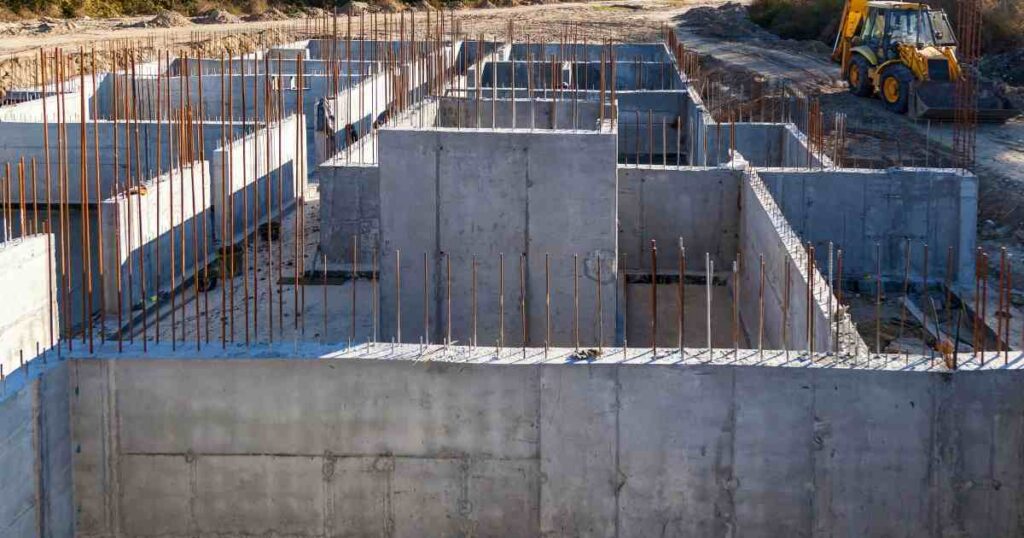Introduction
Curious about what civil engineering is? Well, it’s all about designing and building things that make our world work from roads and bridges to skyscrapers and water systems. Think of civil engineering as the backbone of our modern society. Without it, we wouldn’t have safe buildings, efficient transportation, or clean water.
Civil engineers use their skills to solve real-world problems and make our lives better. Their work impacts everything around us, shaping the world we live in. So, the next time you cross a sturdy bridge or turn on your tap for a drink of water, remember the role that civil engineering plays in our daily lives.

II. History and Evolution of Civil Engineering
Have you ever wondered, “What is Civil Engineering?” Well, let’s dive into it! Civil engineering is the backbone of our modern world. It involves designing, constructing, and maintaining the infrastructure we rely on every day, from bridges and roads to buildings and water systems.
Looking back at history, early civilisations like the Egyptians and Romans were pioneers in engineering. They built awe-inspiring structures like the pyramids and aqueducts, showcasing their advanced knowledge of construction. These ancient feats laid the foundation for what would later become the field of civil engineering.
As societies evolved, so did the need for organised infrastructure. This led to the development of civil engineering as a distinct profession. Engineers began specialising in areas like structural design, transportation systems, and environmental engineering to meet the growing demands of urbanisation and industrialisation.
Today civil engineers continue to shape our world today by addressing complex challenges such as sustainable development, disaster resilience, and smart infrastructure. They blend creativity with technical expertise to create solutions that improve the quality of life for people around the globe.
In essence, civil engineering is not just about building structures; it’s about building a better future for everyone. So, the next time you cross a bridge or turn on a tap, remember the ingenuity and dedication of civil engineers who make it all possible.
III. Key Areas of Civil Engineering
Civil engineering is a broad and diverse field that plays a vital role in shaping our built environment. At its core, civil engineering is all about designing, constructing, and maintaining infrastructure that we rely on every day. But what exactly is civil engineering, and what are the key areas that fall under this umbrella term?
Let’s break it down in a casual and easy-to-understand way. Imagine a friend asking you, “What is civil engineering?” You could tell them it’s like the backbone of our society’s infrastructure, ensuring that everything from buildings to bridges to roads is safe, efficient, and sustainable.

A. Structural Engineering
Structural engineering is a branch of civil engineering that designs and analyses large structures such as buildings, bridges, dams, towers, and other structures to ensure they can withstand the loads and stresses they will encounter during their lifespan.
Structural engineers use principles of physics and mathematics to design safe and stable structures that can resist forces like gravity, wind, seismic activity, and other external loads.
They work closely with architects, construction teams, and other professionals to create buildings and infrastructure that are both functional and structurally sound. Structural engineering plays a crucial role in ensuring the safety and stability of the built environment.
B. Transportation Engineering
Transportation engineering is a branch of civil engineering that focuses on designing, constructing, and maintaining transportation systems such as roads, highways, railways, airports, and public transportation networks.
It involves the study of traffic flow, transportation planning, geometric design of transportation facilities, pavement design, and transportation safety. Transportation engineering aims to ensure the efficient and safe movement of people and goods from one place to another. This field is crucial in urban development, environmental sustainability, and overall quality of life.

C. Geotechnical Engineering
Geotechnical Engineering is a branch of civil engineering that deals with the behaviour of earth materials such as soil, rocks, and groundwater. It involves analysing and designing structures interacting with the ground, ensuring their stability, durability, and safety.
Geotechnical engineers assess the properties of soil and rock formations to determine their suitability for construction projects, such as buildings, roads, bridges, dams, and tunnels.
They also evaluate the impact of natural events like earthquakes, landslides, and floods on these structures. Through various testing methods and data analysis, geotechnical engineers provide recommendations to mitigate risks and ensure the long-term performance of the structures.
D. Water Resources Engineering
Water resources engineering deals with the design and management of water resources, such as rivers, lakes, groundwater, and oceans. It involves the study of hydrology, hydraulics, and water quality to develop sustainable solutions for the efficient use and conservation of water resources.
Water resources engineers work on water supply, flood control, irrigation, and wastewater treatment projects. They are crucial in addressing water scarcity, pollution, and environmental sustainability issues.

E. Environmental Engineering
Environmental engineering is a branch of engineering that focuses on protecting the environment by developing solutions to environmental problems. This field involves applying engineering, biology, chemistry, and soil science principles to address issues such as air and water pollution, waste management, and natural resource conservation.
Environmental engineers work to design and implement systems that improve environmental quality and sustainability, aiming to ensure that human activities have minimal negative impact on the environment. They may work on projects related to renewable energy, water treatment, pollution control, and environmental remediation.
IV. Skills and Qualifications Needed to Become a Civil Engineer
To become a civil engineer, one must possess a combination of education, technical skills, and soft skills.

1 . Education and Training
A strong foundation in civil engineering principles is essential for this profession. This typically involves obtaining a bachelor’s degree in civil engineering or a related field. Some positions may require a master’s degree or additional certifications.
2 Technical Skills
Civil engineers must have a solid understanding of engineering concepts and be proficient in using various technical tools and software. They should be adept at performing calculations, creating designs, and analysing data related to construction projects.
3. Soft Skills
Communication, problem-solving, and project management skills are important for civil engineers to effectively collaborate with team members, communicate with clients, and address challenges that may arise during a project. Additionally, strong critical thinking and decision-making abilities are valuable in this field.

V. Career Opportunities in Civil Engineering
Civil engineering offers various career opportunities with various employers, including government agencies, construction companies, consulting firms, and research institutions. Job roles in civil engineering may involve designing, constructing, and maintaining infrastructure projects such as roads, bridges, buildings, and water supply systems.
Responsibilities could include project management, cost estimation, site inspection, and compliance with regulations and standards. Salaries in civil engineering can vary depending on factors such as experience, location, and specialisation, with opportunities for growth as professionals gain more skills and expertise in the field. Civil engineering is a dynamic field with potential for advancement into leadership positions and opportunities to work on diverse and impactful projects.
VI. Challenges and Future of Civil Engineering
The civil engineering industry is currently facing several challenges that are shaping the way projects are planned, designed, and executed. Key challenges include ageing infrastructure, sustainability concerns, limited funding, and the need for increased resilience to natural disasters. Addressing these challenges requires innovative approaches and technologies to ensure that infrastructure projects are built to withstand future demands and environmental pressures.
==> Emerging technologies and their impact
The emergence of new technologies is revolutionising the field of civil engineering and presenting opportunities to address current challenges. Technologies such as Building Information Modeling (BIM), advanced materials, drones, and artificial intelligence are transforming how infrastructure projects are conceptualised, designed, and constructed. These technologies improve engineering practices’ efficiency, accuracy, and safety, leading to better project outcomes and enhanced sustainability.

==> Future trends and advancements
The future of civil engineering is poised for significant advancements driven by trends such as smart infrastructure, sustainable design practices, and digitalisation. Smart infrastructure technologies, including IoT sensors and data analytics, will enable real-time monitoring and maintenance of infrastructure assets, leading to improved performance and longevity.
Sustainable design practices will continue to gain importance, focusing on reducing carbon emissions, enhancing energy efficiency, and promoting environmentally friendly construction methods. Additionally, digitalisation will play a key role in streamlining project delivery processes, enhancing collaboration, and optimising resource allocation. The integration of these trends and advancements will shape the future of civil engineering, making infrastructure more resilient,
Conclusion
And there you have it, a complete guide to civil engineering! From the basics of what it is to the different career paths it offers and the important role it plays in our daily lives, we hope this post has given you a better understanding of this fascinating field. Whether you are considering studying civil engineering or are just curious about the subject, we hope you learned something new and interesting. Thanks for reading, and stay curious!
FAQs
1. What are the key responsibilities of civil engineers?
Civil engineers oversee various tasks throughout a project’s lifecycle, including feasibility studies, design, construction management, compliance with regulations, site inspections, and maintenance, aiming to ensure safety, efficiency, and sustainability of infrastructure projects.
2. What are the current challenges facing the field of civil engineering?
Civil engineering faces challenges like urbanisation, ageing infrastructure, climate change, resource scarcity, and population growth. Engineers must adopt innovative technologies sustainable practices, enhance resilience, and design infrastructure for societal needs.
3. What are the core disciplines within civil engineering?
Civil engineering comprises various disciplines like structural, geotechnical, transportation, environmental, water resources, construction, and urban planning, each focusing on infrastructure development and management.
4. What are the future prospects for civil engineering careers?
Civil engineering offers promising career prospects due to global infrastructure demand and advancements in technology like BIM, drones, and automation. These advancements revolutionise infrastructure design, construction, and management, ensuring a stable future.











